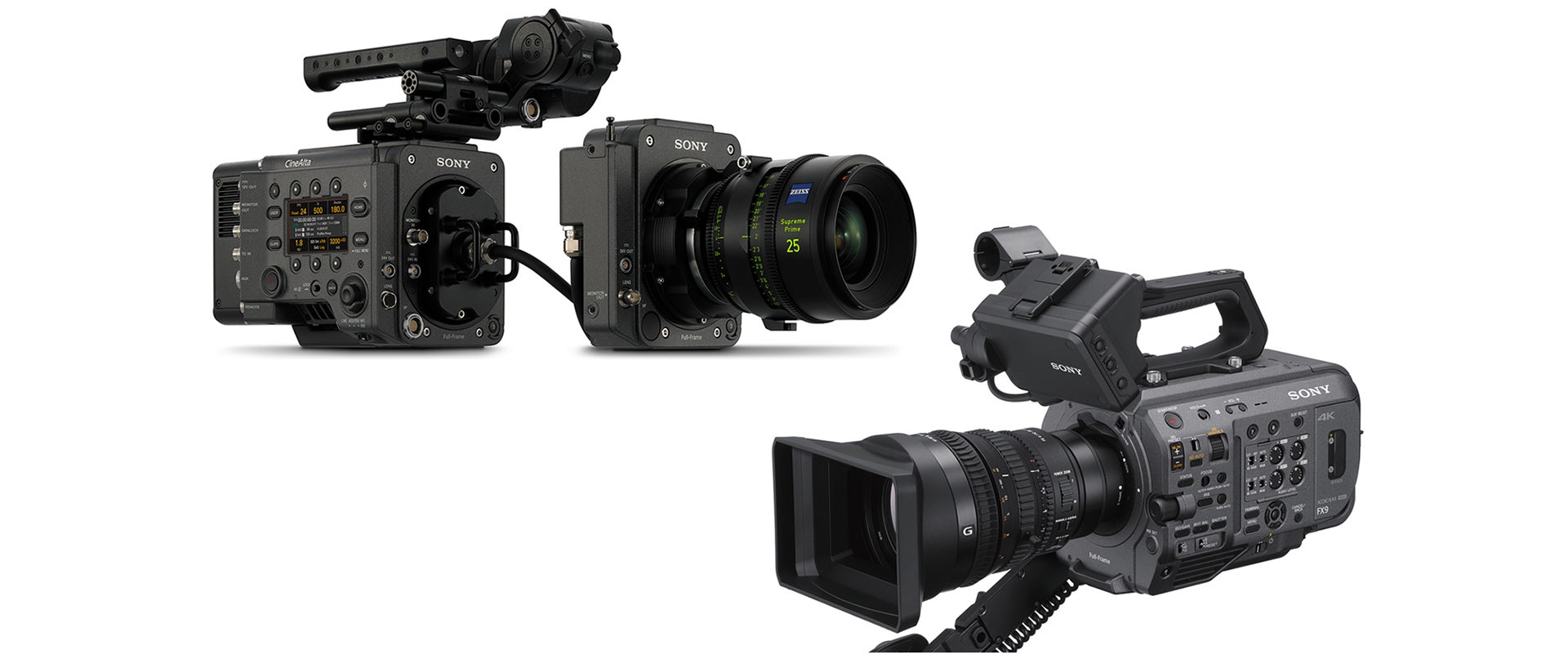
01-22-2021 - Gear, Technology
Evaluating the Sony FX9 and VENICE Sensors – An AbelCine Tutorial & Guide
By:
Since the release of Sony's PXW-FX9 digital cinema camera, we've gotten a lot of questions from clients about how it compares to Sony's flagship cinema camera, the VENICE. Now that Sony has released major firmware updates for both cameras (2.01 for the FX9 and 6.0 for the VENICE), we thought now would be a good opportunity to compare their capabilities, particularly in terms of each camera’s sensor.
This article originally appeared on the AbelCine website - Evaluating the Sony FX9 and VENICE Sensors.
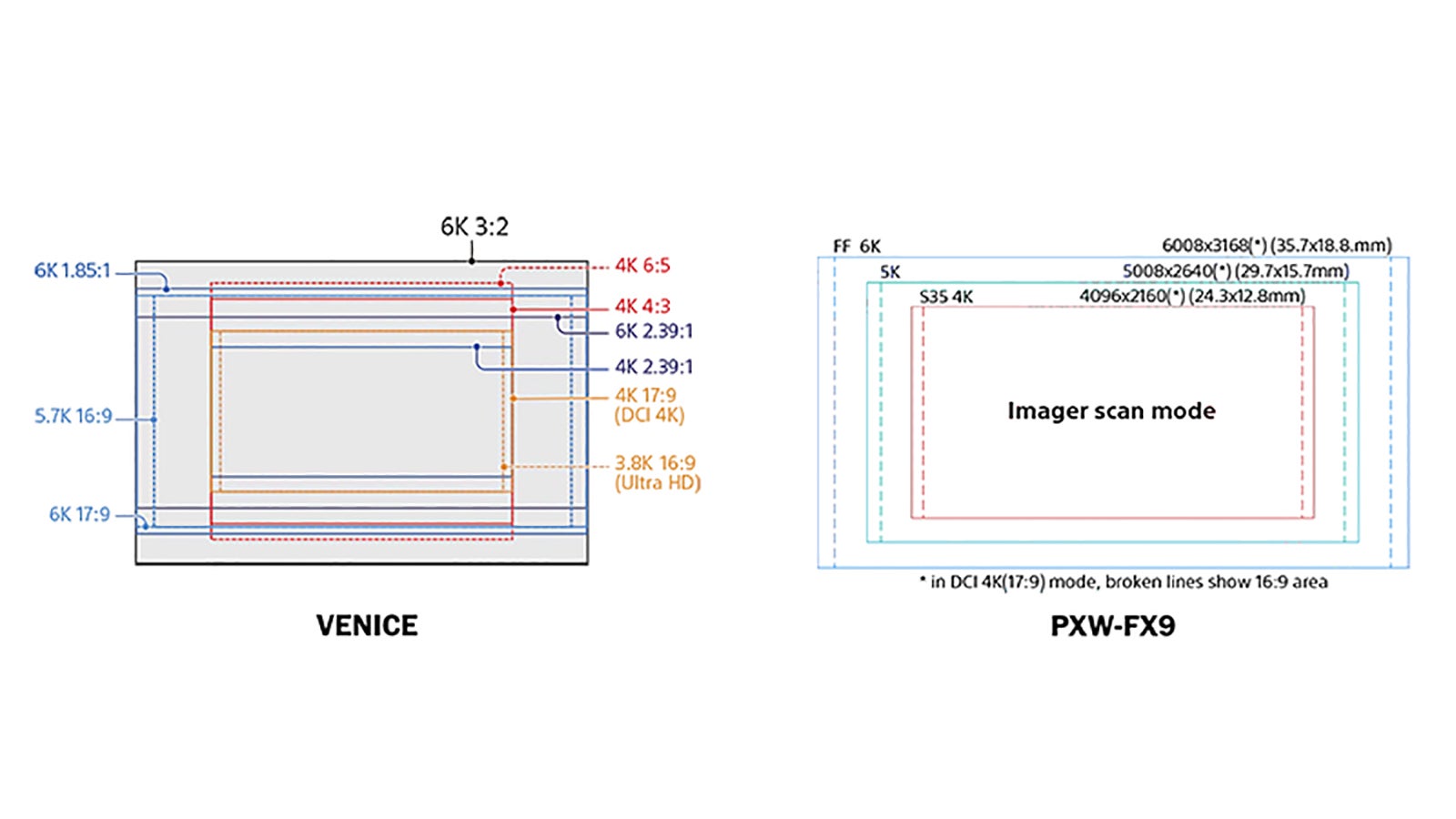
SENSOR FORMAT
The FX9 features a full frame 6K Exmor R CMOS sensor measuring 35.7mm x 18.8mm, in the 'DCI' aspect ratio of 1.89:1. This yields a 6K image for the camera’s active capture area, which it then downsamples to up to 4K DCI 4096 x 2160 (for files recorded internally). The camera can also be operated in a Super35 sensor mode, which shoots at 1:1 resolution using a 4K cropped central area or, with firmware 2.0, a 5K 16x9 'best fit' area for some modest oversampling.
In contrast, VENICE uses a VistaVision format sensor in the “classic” 36mm x 24mm dimensions of 35mm still photography (36.2 x 24.4mm on VENICE, to be exact) at an aspect ratio of 1.5:1. With 6048 x 4032 active photo sites, VENICE can capture a larger overall frame, allowing for a broader field of view (overall) than the FX9, as well as some unique recording modes (however, for the modes they share, the horizontal angle of view when mounting a full-frame lens should be virtually identical). The VENICE's 'large canvas', though, is ideal for VFX background plates, where compositors appreciate extra room to “cheat the plate,” as well as being a near-perfect fit for large-format exhibition such as IMAX 4K and advanced anamorphic workflows.
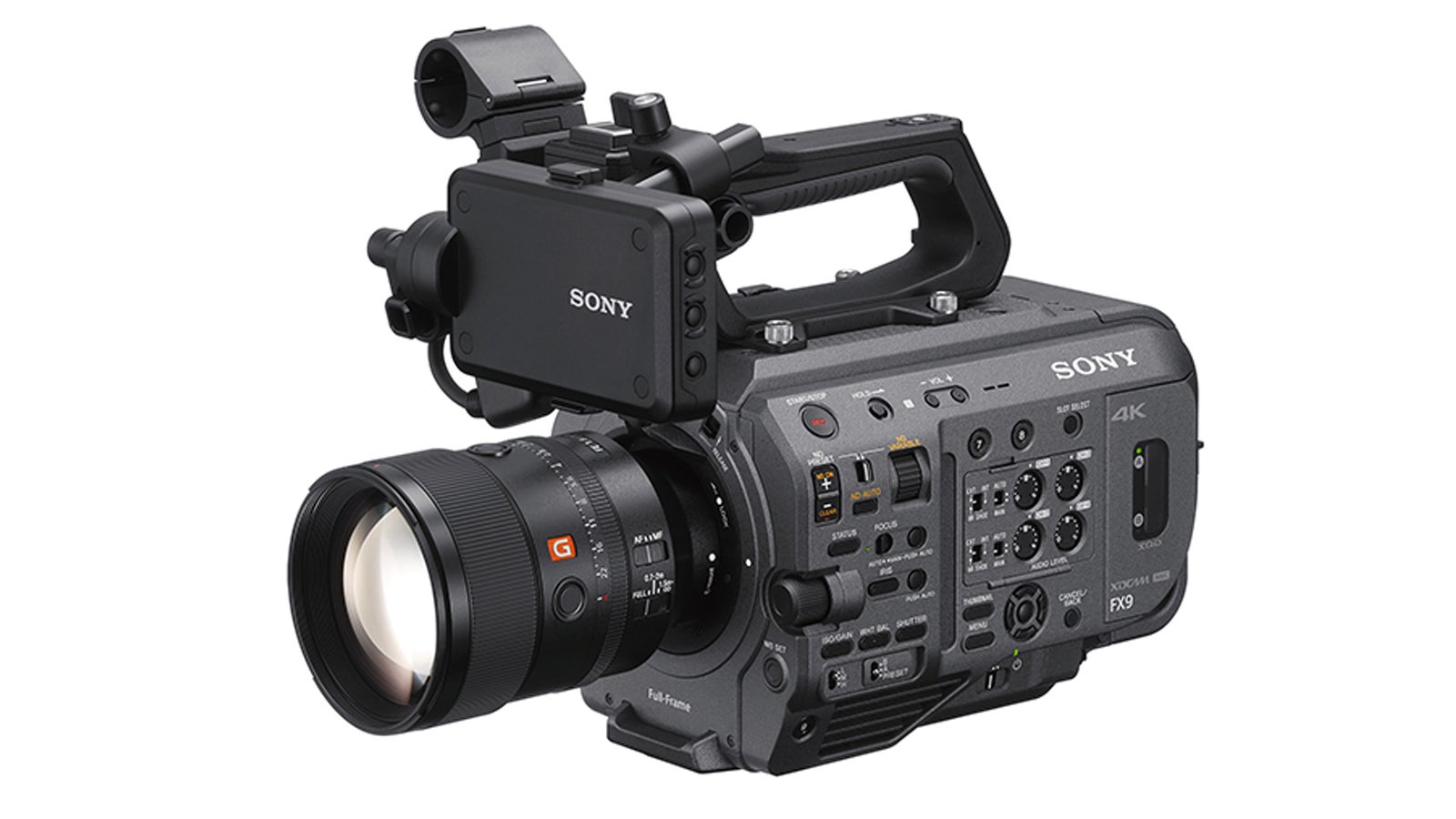
DIFFERENCES
Clearly, the two cameras are aimed at different segments of the market. Aside from the price difference—nearly $30,000 between the bodies alone—the FX9 clearly owes its lineage to the PXW-FS7 and FS7 II—themselves modern updates to Sony’s legendary XDCAM line such as the EX1 and EX3 (hence ‘PXW’ in the model line designation, rather than the familiar ‘PMW’). From the body shape, button layout, and included accessories to the menu structure and layout, the FX9 will certainly be familiar to FS7/II shooters and so in that way (along with price) seems like the natural path to a full-frame cinema camera.
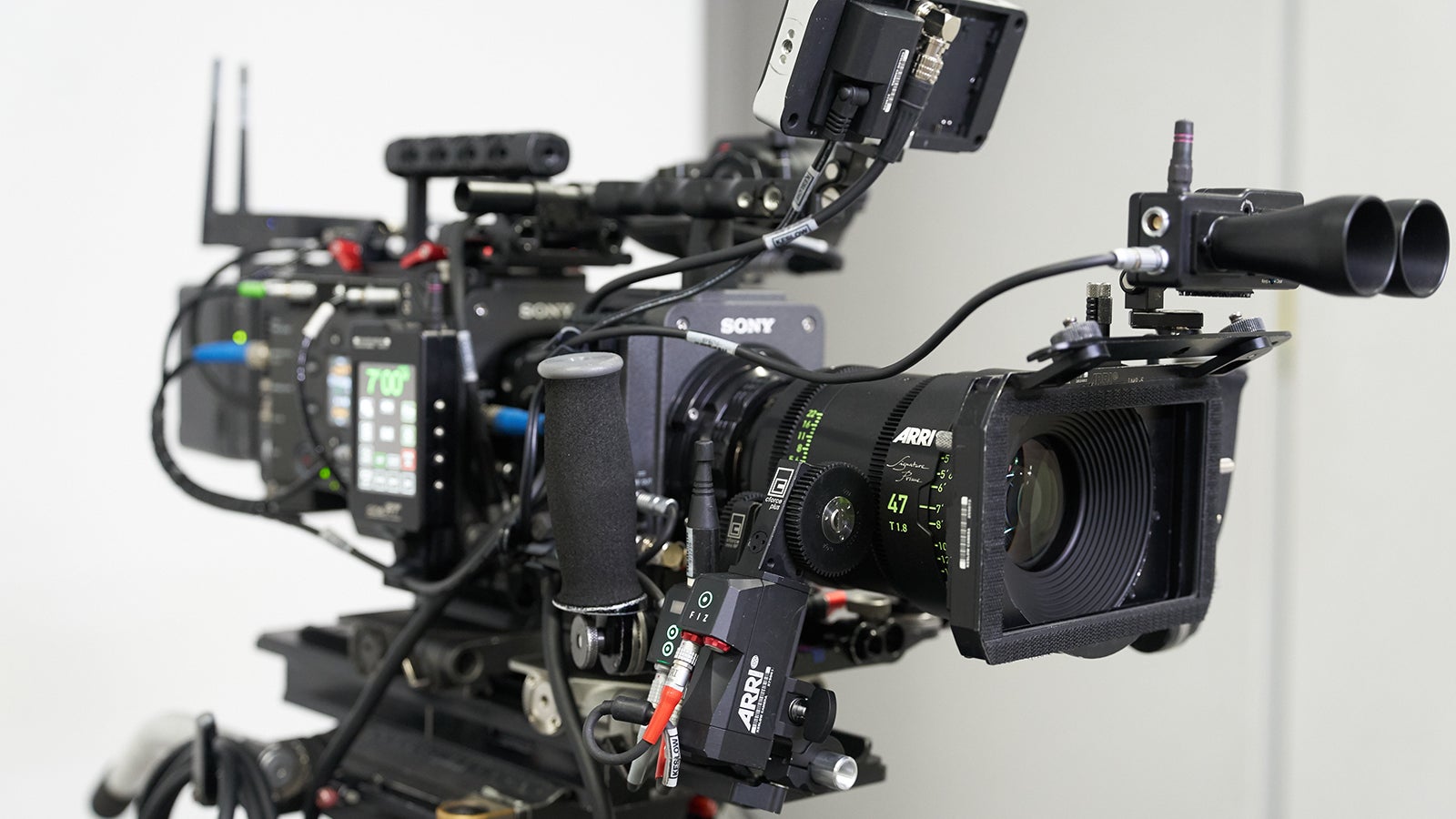
VENICE, just as clearly, is aimed at those looking for a feature-level ‘A’ camera, capable of competing with the best of what’s out there from other manufacturers. Along with the hallowed CineAlta branding (and a new MPC designation, presumably for Motion Picture Camera, in its international marketing, where it’s known as the MPC-3610), VENICE gives little up to competitors in image quality, features and functionality and, well, just about any category you can name.
VENICE lacks the ‘Custom’ shooting mode found in a number of previous CineAlta cameras, such as the F5 and F55, which allows the camera to be operated more as a conventional video camera with a 'baked-in' or painted look. Footage captured in custom mode required little to no additional color correction for jobs where the quickest of turnarounds is required, for when clients want to receive files that are 'ready to go' at the end of the day. However, for live event production or live-to-tape workflows (‘live-to-file’?) VENICE can, as of firmware version 5.0, be painted (or shaded) via a paintbox or camera control unit plugged into the rear 8-pin REMOTE port.
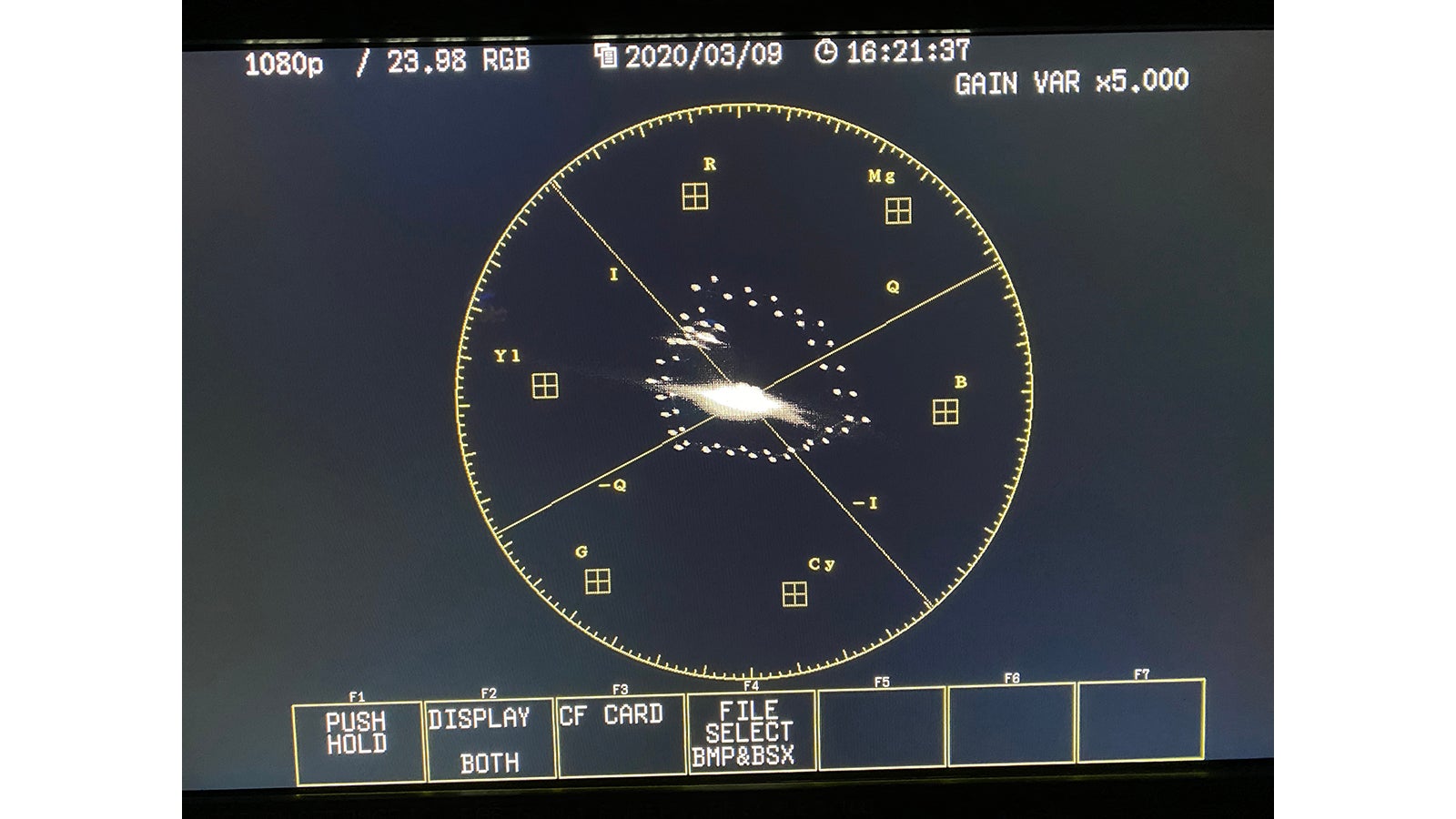
Simultaneous vectorscope outputs from Sony FX9 and VENICE show image similarities. Note: Vectorscope scaled to highlight details.
SIMILARITIES
One area where our testing has shown enough similarity between the cameras to consider their use in tandem (for example, VENICE as the ‘A’ camera with the FX9 serving in 2nd Unit, B-roll or other support capacity) is when shooting the FX9 in its dedicated ‘Log’ mode, called CineEI. VENICE is essentially in CineEI mode all the time (with the exception of the ‘paint’ mode mentioned above); the application of looks or LUTs to final recordings is reserved primarily for proxies or other secondary recordings.
However, with both cameras set to record XAVC-I in S-Log3 and the S-Gamut3.Cine color space, the FX9 and VENICE can come surprisingly close to one another in terms of both look and utility, perhaps without exploiting all of what VENICE is capable of. We did observe some deviation between the two in terms of ultimate color response (as well as more sample variation among different ‘copies’ of the FX9) but it’s nothing that couldn’t be balanced to match during a color grade. And, with User 3D LUTs capability now present in both cameras, applying different versions of the same basic look to help match the two cameras while shooting should be straightforward. Also, both cameras have been approved for use by Netflix for their original programming for some time now.
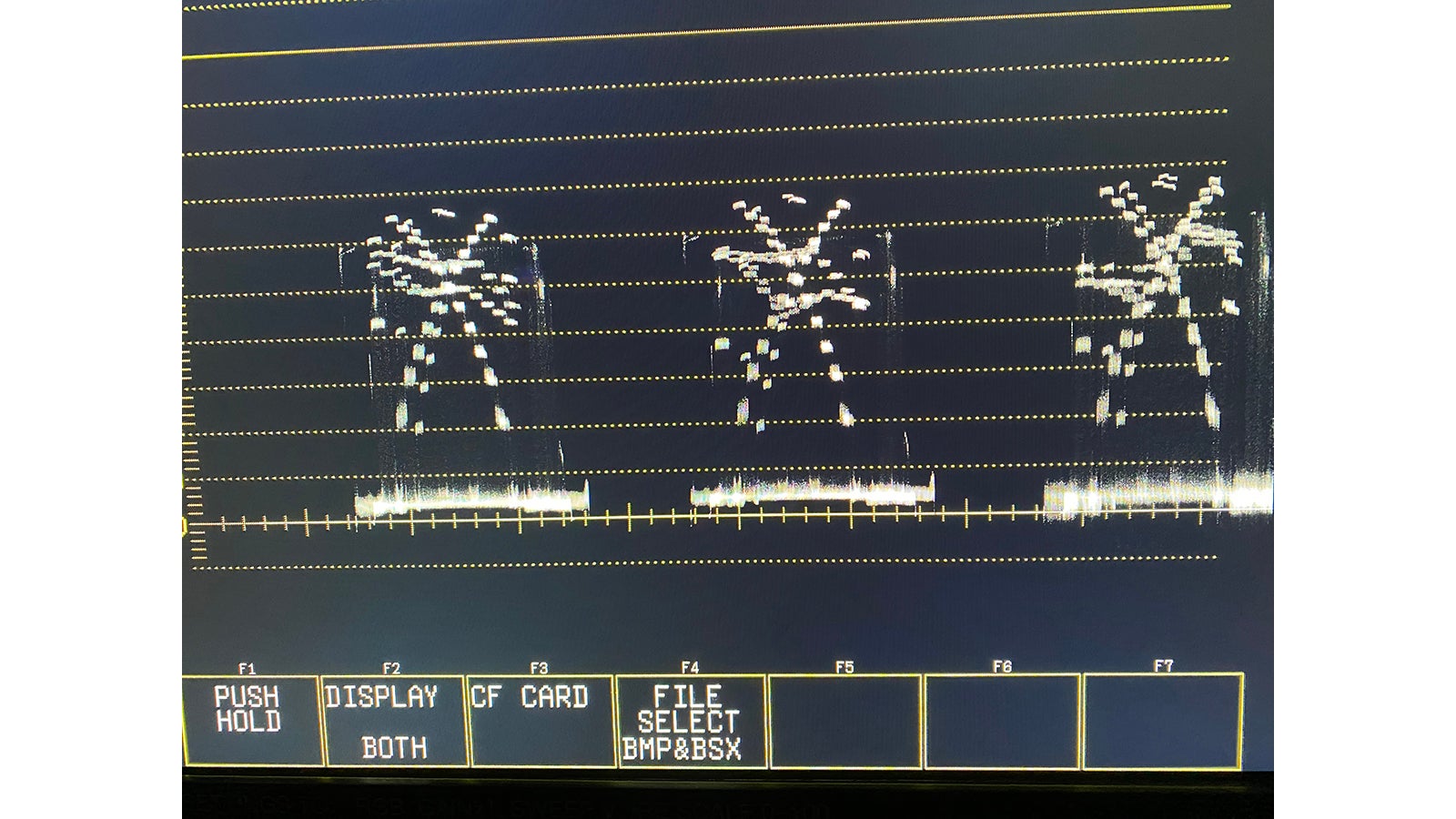
Simultaneous waveform outputs from Sony FX9 and VENICE show image similarities.
THE BOTTOM LINE
Overall, while the cameras have significant differences, as well as not-altogether-complimentary gaps in functionality, they certainly can be used together. The VENICE is a no-holds-barred, top-shelf system geared for features and high-end episodics. However, the FX9 makes for both a competent ‘B’ camera for projects—or rental jobs—where an additional VENICE body is a bridge too far for budget or complexity reasons, as well as providing a logical, and more accessible, path to full-frame shooting for owner-operators.




